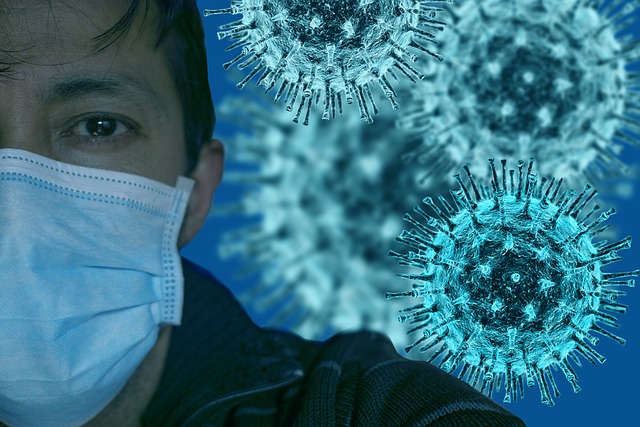Surge in COVID-19 Cases Marks the “Second Wave” Post-Pandemic.
- Normal Liver Cells Found to Promote Cancer Metastasis to the Liver
- Nearly 80% Complete Remission: Breakthrough in ADC Anti-Tumor Treatment
- Vaccination Against Common Diseases May Prevent Dementia!
- New Alzheimer’s Disease (AD) Diagnosis and Staging Criteria
- Breakthrough in Alzheimer’s Disease: New Nasal Spray Halts Cognitive Decline by Targeting Toxic Protein
- Can the Tap Water at the Paris Olympics be Drunk Directly?
Surge in COVID-19 Cases Marks the “Second Wave” Post-Pandemic. Are Symptoms Undergoing Intense Changes?
- Should China be held legally responsible for the US’s $18 trillion COVID losses?
- CT Radiation Exposure Linked to Blood Cancer in Children and Adolescents
- FDA has mandated a top-level black box warning for all marketed CAR-T therapies
- Can people with high blood pressure eat peanuts?
- What is the difference between dopamine and dobutamine?
- How long can the patient live after heart stent surgery?
Surge in COVID-19 Cases Marks the “Second Wave” Post-Pandemic. Are Symptoms Undergoing Intense Changes?
Five years since the onset of the new coronavirus and the global pandemic, symptoms appear to be evolving. Are the manifestations of the 2024 COVID-19 infections different from those five years ago?
Currently, the Omicron variant, specifically the “JN.1” strain, accounts for 62% of infections in the United States. While symptoms induced by JN.1 are generally mild, severe cases leading to fatalities still persist. In the U.S., hospitalizations and, in the worst cases, deaths related to infections are on the rise.
To shed light on the prevalent symptoms and crucial considerations amid the surge, insights were sought from experts, including Dr. Thomas Russo (Professor of Medicine and Infectious Disease Chief at the University at Buffalo), Dr. Ameesh Adalja (Infectious Disease Specialist and Senior Scholar at the Johns Hopkins Center for Health Security), and Dr. William Schaffner (Professor of Medicine at Vanderbilt University Medical School).
Current Surge in COVID-19 Cases in the U.S.
According to data from a wastewater survey conducted by the Centers for Disease Control and Prevention (CDC), the current infection rate is the second-highest since the start of the pandemic in 2020.
As per the CDC data, the rate of increase in current hospitalizations is over 3%, with a 14% increase in deaths. “Overall, symptoms in infected individuals are mild, and hospitalization is generally unnecessary. It is extremely challenging to distinguish from the common cold or influenza,” noted Dr. William Schaffner. Consequently, while some experience mild symptoms, others remain asymptomatic.
Understanding the Latest Variant, JN.1
The predominant variant in the U.S. is currently JN.1, with approximately 44% of COVID-19 cases attributed to it as of December 2023. Detected by the CDC in mid-November of the previous year, JN.1 is a mutation of the Omicron variant known as “BA.2.86.” In Japan, JN.1 has seen a rise since around November, constituting 31% of infections as of December 28. There are concerns about its resurgence in China, solidifying its global prevalence.
Symptoms of COVID-19 in 2024
Fatigue is a commonly shared symptom, often persisting even after the fever subsides.
Since October 2022, the CDC has not updated the official list of symptoms. The current symptoms include:
– Fever and chills
– Cough
– Shortness of breath or difficulty breathing
– Fatigue
– Muscle or body aches
– Headache
– Loss of taste or smell
– Sore throat
– Congestion or runny nose
– Diarrhea
“Except for a reduction in reports of abnormal taste or smell, the symptoms of the new coronavirus have not changed significantly,” stated Dr. Ameesh Adalja. Dr. Thomas Russo added, “Overall, symptoms resemble those of a common cold, such as sore throat, runny nose, fever, and body aches. This is attributed to the immunity developed by individuals through infection, vaccination, or both.”
However, Dr. Russo highlighted that some individuals, especially those at risk such as children, the elderly, immunocompromised individuals, pregnant women, and those with underlying lung conditions, may experience severe symptoms or fatalities. “In addition to other symptoms, they may experience shortness of breath or chest pain.”
Is the Latest Vaccination Necessary?
The CDC recommends vaccination for individuals aged 5 and above. Currently, only about 14% of eligible Americans are vaccinated. “It’s never too late,” advises Dr. Russo, encouraging those who are yet to be vaccinated to consider it.
Latest COVID-19 Guidelines for 2024
Over the past year, guidelines have seen minimal changes. It remains crucial, especially for those at high risk, to self-test if symptoms arise. “Determining whether it’s a COVID-19 infection or another respiratory virus is vital, and using an infection kit for diagnosis is important,” emphasized Dr. Adalja.
If the results are positive, immediate consultation with a physician is advised. Dr. Schaffner explained, “There are medications to prevent the worsening of mild symptoms.” Even if the test is negative but severe symptoms persist, seeking a physician’s diagnosis is recommended.
In case of a positive result, the CDC recommends at least 5 days of home isolation, with continued mask use for 10 days in any environment with people present (as of 2024). Similarly, in Japan, after transitioning to the fifth-level infectious disease of the new coronavirus, a 5-day home recovery period is recommended, with mask usage recommended for 10 days from the onset of symptoms.

Surge in COVID-19 Cases Marks the “Second Wave” Post-Pandemic. Are Symptoms Undergoing Intense Changes?
Source: https://news.yahoo.co.jp/articles/d6e86f98d058a1fc1e80613b3c71a8a465c7a9d6
(source:internet, reference only)
Disclaimer of medicaltrend.org
Important Note: The information provided is for informational purposes only and should not be considered as medical advice.



